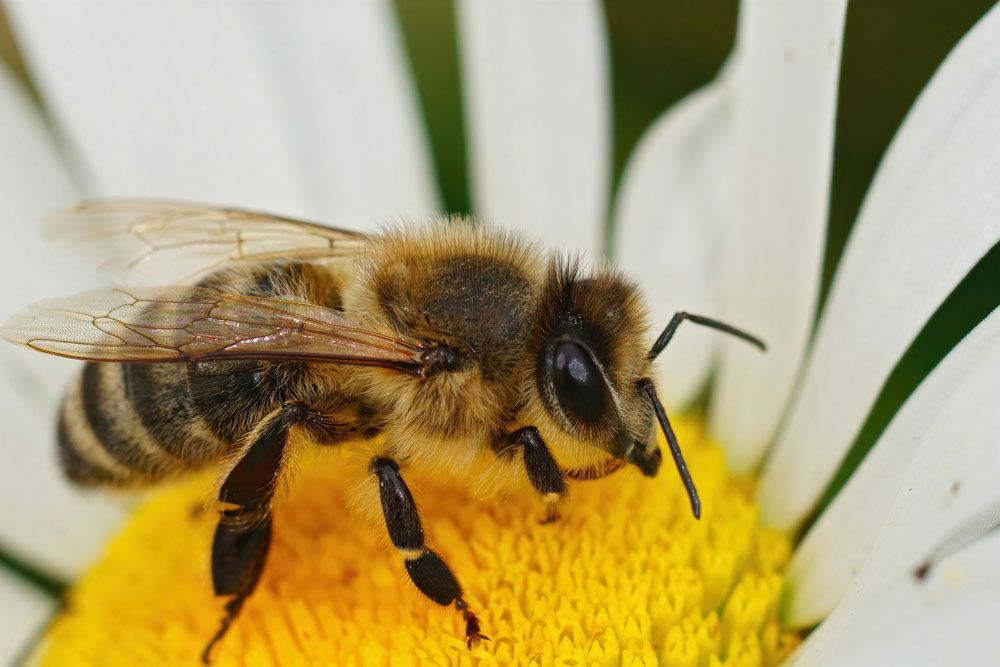
Honey Bee – Apis melifera
Honey Bee
Scientific Name: Apis mellifera
Common Name: Western honey bee, European honey bee, domestic honey bee
Appearance: Honey bees are red or brown, with yellow stripes and two pairs of legs, and three pairs of wings. They have a hairy abdomen, with pollen baskets on the hind legs to carry pollen to their colonies. The females are smaller than the males and have a pointed abdomen along with a stinger. The females are divided into non-reproductive worker bees and reproductive queen bees. The male bees are called drones and have rounded abdomens.
Host Plants or Food: They feed on nectar and pollen from flowers as well as on honey produced by other bees.
Territory: Throughout Asia, North America, Australia, Europe.
Mode of Damage: They feed on flowers and sap. This helps in pollination, making them beneficial garden insects.
Habits and Life History:
Honey bees are found vastly in gardens and areas with a variety of flowers since they feed on the nectar.
They live in colonies consisting of a female queen bee, female worker bees, and male drone bees.
It is the queen bee that is fertile and majorly responsible for the continuation of the life cycle.
After mating, the queen bee lays eggs into the honeycomb. The egg gives rise to larvae, which are nursed by the worker bees into adults, which leave the comb and continue the cycle.
Generally, queen bees live for 3 to 5 years, the worker bees for a few weeks, and the male drones live for 4 to 8 weeks.
